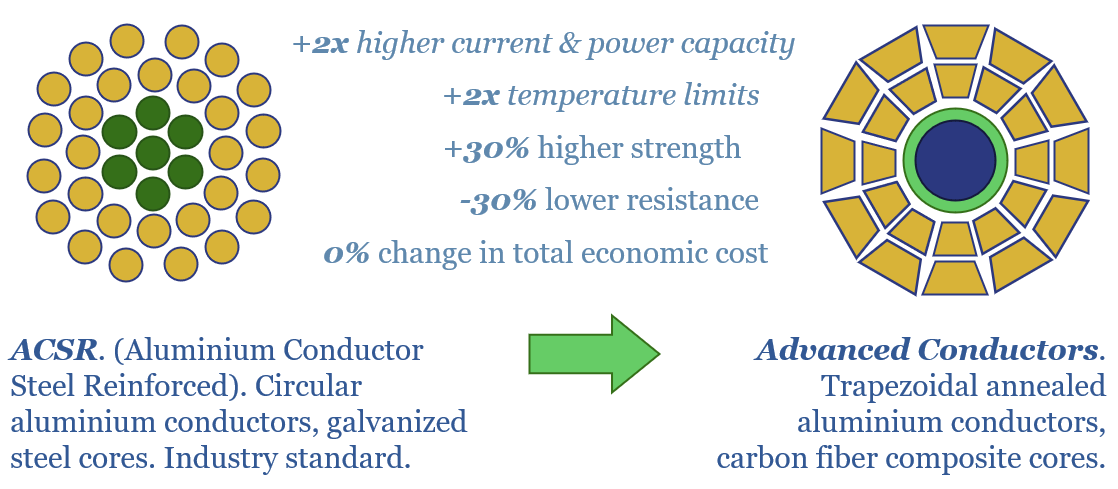Reconductoring today’s 7M circuit kilometers of transmission lines may help relieve power grid bottlenecks, while avoiding the 10-year ordeal of permitting new lines? Raising voltage may have hidden challenges. But Advanced Conductors stand out in this 18-page report. And the theme could double carbon fiber demand?
Power grids are shaping up to be one of the biggest and most imminent bottlenecks in the energy transition, for the reasons in our note here, having the consequences in our note here, and one of many reasons why new AI data-centers will need to build their own dedicated generation capacity per our note here.
A key challenge for constructing new transmission lines is the long development times, as permitting can take over 10-years. Hence what opportunities exist to raise the capacity of today’s 7M circuit kilometers of existing global transmission lines, e.g., via reconductoring.
The carrying capacity and the cost of a power line are built up from first principles on pages 2-4. Raising capacity requires raising voltage or raising current, ideally without inflating the costs of transmission.
(For more theory, please see our overview of energy units, overview of electricity and/or overview of power transmission, reactive power and harmonic distortion).
The simplest option to increase the capacity of a power transmission line might be to increase the voltage, by upgrading the transformers. Doubling voltage, all else equal, might seem to double the power. But we think material voltage increases may be more challenging than indicated in other recent commentaries, with negative net NPVs, per pages 6-8.
Raising the current through each conductor is the other way to increase power ratings. Usually there are technical and economic issues. But they can be economically addressed with Advanced Conductors, which replace steel strands at the center of Aluminium Conductor Steel Reinforced (ACSR) with composites such as carbon fiber. Properties of Advanced Conductors versus ACSR and economic costs are on pages 9-13.
Materials implications? Carbon fiber is a miracle material, which is 3-10x stronger than steel, but 70-80% lighter. Could Advanced Conductors effectively double global demand for carbon fiber by 2030, taking the carbon fiber market from recent oversupply into bottleneck territory? Forecasts for aluminium and copper are also revised on pages 14-15.
Leading producers of Advanced Conductors are profiled on page 16. One large public conglomerate and three private companies are gearing up. Overall, Advanced Conductors are among the best antidotes we have seen for power grid bottlenecks, based on the cost-modelling in this note.
In September-2024, we have added further details into the note, screening Prysmian’s E3X technology that dovetails with advanced conductors and achieves many of the same benefits (page 17) and tabulated evidence that advanced conductors are accelerating (page 18).
